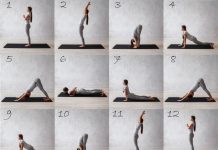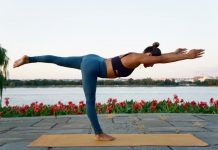If Yoga has a central core concept around which every asana is delicately balanced, that would be, without doubt, the role of breath. Different schools of Yoga, Hatha, Vinnyasa and more, all have different asanas in their repertoire, but all of them agree that the starting point for yoga is breathing. And, while it is important to perfect every asana, and hold it for the right duration, with the body in just the right posture, and every muscle in place, no asana will have the beneficial impact it is meant to, unless the breathing pattern prescribed for the asana is followed properly.
Let’s take a moment to understand why breathing is such a cornerstone of good yoga. The breath, or prana, which means “vital force” is understood in Western science as simply oxygen. In the yogic tradition, this also refers to the energy source that sustains the life within our bodies. Our requirements of this vital energy fluctuate, depending on our state of bodily exertion or rest, mental ease or distress, as well as the state of our bodies, our age and so on.
Against this background, it is generally true that when our bodies are at rest, when we are free from disease, and when we are mentally calm, our breathing is slow and measured. Yoga works with the opposite principle as well – when we breathe slowly and calmly, we trick our bodies and minds into entering a calm and composed state of being.
When our focus turns to breathing, the way our brain works also subtly shifts. The control of the breathing turns from an automatic process into a planned, deliberately controlled effort, and triggers a different part of the brain. To locate it within our anatomy, it moves from the lower, more primitive part of our brain, the brain stem, to the cerebral cortex, a much later evolution of the brain, and therefore more advanced in function. When the cerebral cortex turns its energies towards breathing, thoughts are bypassed, and focus of the most intense kind becomes possible. This has a feedback loop that runs back into our breathing cycles – once our emotional disturbances are managed, the prana becomes more free flowing.
Now that we know how this works, let us consider these important, albeit generic rules for breathing through most asanas:
- Inhale when opening up your body: If an Asana calls for you to open up the front of your body, such as lifting your arms, bending backwards, or raising your head, breathe in, and let the breath expand your chest and abdomen. This supports the movement and lets you flow into the pose without any bodily resistance.
- Exhale when closing yourself: The opposite applies, when you bend inwards, sideways, or twist your body, exhale, for you are compressing the front of your body and the organs that lie within. All these movements restrict the expansion of the chest and abdomen, so inhaling while doing these actions will cause harm to your body.
- If you pause breathing after inhaling, don’t move: Sometimes, a long inhalation is followed by a momentary holding of the breath. This is more common when you perform a long inhalation, and completely fill your lungs to capacity. At such a moment, your body will naturally resist further movement. Give in to that instinct and hold the asana. Conversely, reach this point of holding your breath only once you have finished reaching the end point of your asana, and try not to hold your breathe if you are still moving towards reaching your final pose.
- If you pause after exhaling, move: Exhaling relaxes the lungs and abdomen, and reduces your body’s resistant to movement: use this pliable moment, and move your body back into rest or to the next movement in your asana-cycle.
- Breathe Easy: This is perhaps, the most important – the golden rule, as it were, of yoga. When you breathe during asanas, breathe as deeply as you can, both while inhaling and exhaling, but go only as far as you comfortably can, without strain. This point is different for different people, and even for the same person, it will change as the person’s adeptness at yoga becomes greater. If your lungs feel strained while breathing in or out, you have pushed too far. So take your cues from your lungs and breathe in as deeply as is comfortable, but no more.
These generic rules are applicable in every instance of yoga, and are an important way to approach your workout in a way that will help you get the maximum advantage out of every single asana. Start working these into your yoga workout starting now, and may you truly breathe easy!
47 Most Famous Motivational Quotes of All-Time
49 Greatest Love Quotes
37 Inspirational Quotes that Will Change Your Life






























